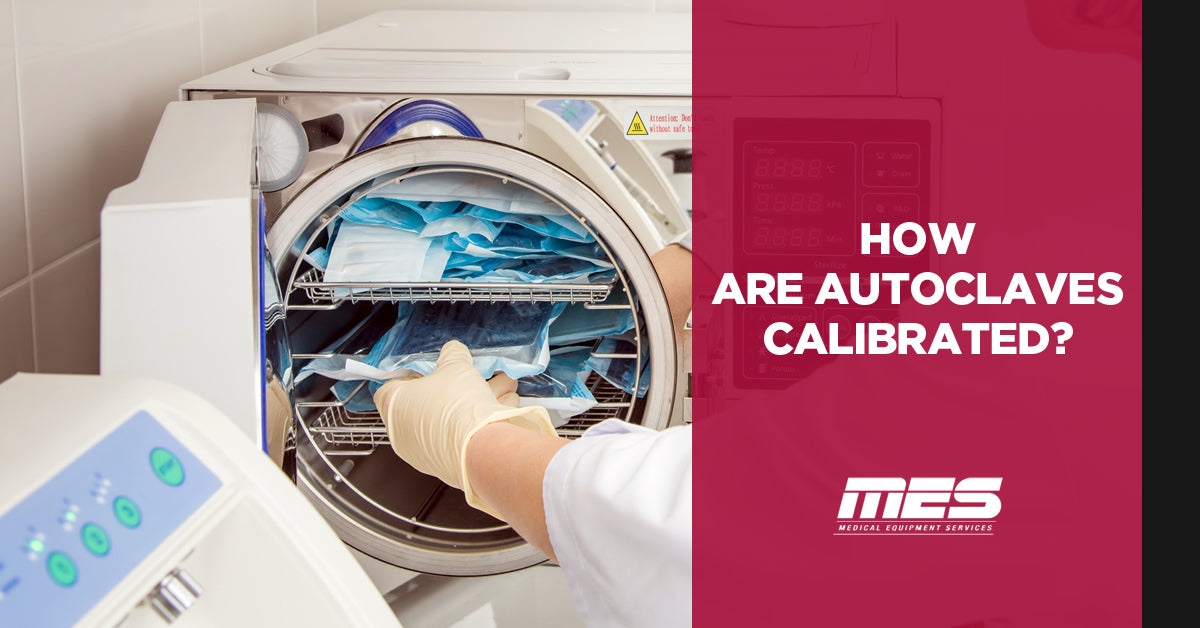
Autoclaves are precision instruments, and as such, it is important that they are calibrated properly.
The calibration process for autoclaves requires the use of precision equipment so that the accuracy of the results is guaranteed.
Calibrating autoclaves is essential because the sterilisation process depends on high temperatures.
An autoclave that is not running as hot as intended can be far less effective than you would expect, which could be incredibly dangerous.
How Calibration Works
Calibration is performed by comparing the reading of the device to be calibrated with another device which is known to be accurate according to national standards.
The US NIST is one commonly used reference for standards, even internationally[1].
One commonly accepted rule of thumb is that the standard should be five times more accurate than the device to be calibrated.
So, if you were calibrating something with an accuracy of +/- 0.5 degrees, then you would want to use a reference device with a calibration standard of +/1 0.1 degrees.
What Equipment Is Used to Calibrate an Autoclave?
Autoclaves can be calibrated using a number of different devices, such as:
- Dry blocks
- Oil baths
- Temperature probes
Of those devices, the temperature probes are the most affordable, with oil baths or dry blocks being more expensive.
Whatever device you choose, make sure that it is properly calibrated itself, and that it is traceable to the national standards.
It is possible to use boiling water as a calibration aid, but this is not the best solution.
This is because the temperature that water boils at changes depending on how far above sea level you are.
For medical and other crucial applications, it is important that you ensure the calibration is accurate.
Single-point calibration is acceptable if you use your autoclave at just one temperature.
If you use the autoclave at more than one temperature then you will need to check the temperature at more than one point for true calibration.
Two-point calibration will show you whether the autoclave is accurate at other temperatures.
If you find that the autoclave is not properly calibrated, but the variance is not linear, then you may need to perform multipoint calibration.
Multipoint calibration is important if you have concerns about the accuracy of the temperature measurements from your autoclave.
We should remember that the tests that dictate how long it takes to achieve sterilisation were done in the 1950s.
While the guidelines are good, there are so many variables that can affect how long it takes to completely sterilise a container.
The size of the container, the shape of it, and the amount of solid material all make a difference.
Metal is easier to sterilise than plastic because it conducts heat well.
Water will sterilise faster than agar, and smaller volumes will be treatable more quickly than larger volumes.
All of this should be taken into account, and you should take care not to overload the autoclave chamber.
Make sure that there is plenty of room for steam to circulate. If you do have to fill the autoclave, then you should extend the treatment time to compensate.
Test Your Device Regularly
It is important to test the autoclave regularly, not just through calibration.
Use biological indicators in the load on a regular basis to confirm that it is working properly.
Monitor the temperature using a separate log device if you can, and don't neglect performance testing.
In a busy lab environment, it is easy for these things to fall by the wayside.
However, they are worth your time because a poorly configured autoclave could be ruining your equipment or putting people's health at risk.
If you are searching for the best medical equipment supplier in Australia, especially autoclaves, look no further than Medical Equipment Services Australia.
We were originally established in 1952 in order to provide electro-medical products to healthcare professionals across the country.
The company (Medical Equipment Services) was acquired by Medical Equipment Australia in 2009. Since then, we have also expanded into the dental industry.


